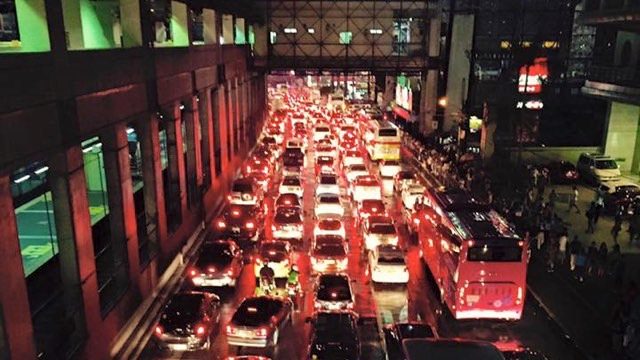SUMMARY
This is AI generated summarization, which may have errors. For context, always refer to the full article.

MANILA, Philippines – To effectively solve the traffic woes of Metro Manila, government officials should prioritize solutions that move more people instead of vehicles, urban planner Benjamin dela Peña said.
Dela Peña, director of community and national strategy at the Knight Foundation, said overhauling the public transportation system is key to easing congestion in the Philippine capital region.
Traffic, he said, is not the problem, but a symptom of the poor state of the public transit system.
“The problem is transportation. It’s not a problem of how a car gets from point A to point B. It’s a problem of how a person goes from point A to point B. We’ve been counting the movement of cars instead of focusing on the movement of people,” Dela Peña said in a Rappler Talk interview on Thursday, October 1.
Metro Manila has limited road space that can no longer sufficiently accommodate the number of people and vehicles using these roads. More than 300,000 vehicles ply the major thoroughfare EDSA every day – way beyond the 23.9-kilometer stretch’s capacity of about 160,000 vehicles.
Earlier this year, the transportation department said private vehicles account for 32% of trips in Metro Manila. Travel by public buses – which can carry around 60 passengers – accounts for only 14%.
Dela Peña attributes the dependency on private vehicles to the unreliable and chaotic public transit network and the perception that owning a vehicle reflects one’s social status.
“The political elite ride cars…. It feeds the thinking that since it’s so hard to go around with public transportation, you get a car. But you add to traffic,” he said.
Other cities, however, have recognized that the oversupply of private vehicles is part of the problem. (READ: What PH can pick up from Seoul’s 2004 bus reform)
“In Copenhagen, there’s a poster that says ‘You are not stuck in traffic, you are the traffic,'” Dela Peña added.
Fix public transit
In recent months, traffic officials have considered solutions that would promote the use of high-occupancy vehicles. Earlier this year, the transportation department sought to promote travel by bus by launching the Express Connect buses. A bus rapid transit system is already being planned for implementation in Cebu.
Metro Manila’s 3 train networks, including the glitch-ridden Metro Rail Transit 3 (MRT3), are also undergoing rehabilitation projects. The government has long been under fire for the trains’ technical glitches and long queue lines, but it has committed to add new trains to serve more passengers.
Aside from the trains, Dela Peña said putting order to the chaotic route network of buses, jeepneys, tricycles, and other informal modes of transportation also needs to be prioritized. (READ: Fixing traffic: Jeeps eyed as feeders to bus routes)
He also proposed implementing congestion pricing in the Philippines, where car owners are charged fees to discourage them from adding to road traffic.
But Dela Peña conceded that while it works in a city like Singapore, it can only be implemented if there’s efficient public transportation in place.
“Congestion pricing can pay for mass transit. We could be doing that but it needs serious shaking up of priorities and paradigms,” Dela Peña said.
Affordable housing
Another factor to consider is the number of people coming in to Metro Manila from nearby provinces to get to their jobs within the city.
Manila’s daytime population is at 12 million, but drops to 8 million at night, according to Dela Peña.
If the government improves its housing policies and provide affordable housing in areas near business districts, this can help lessen the number of trips made every day, he said.
While there have also been proposals to decongest Metro Manila by moving people out of the capital region, Dela Peña said this was not a desirable scenario.
“The bigger the city is, the more it can provide jobs. The only time a city loses population is when the economy is failing. That’s what decongestion looks like, you don’t want that,” he said.
To start a serious campaign to solve traffic, Dela Peña stressed that citizens should keep putting pressure on government to act on the problem.
“This is critical to the life of a city, so it should be critical in public policy,” he said. – Rappler.com
Add a comment
How does this make you feel?
There are no comments yet. Add your comment to start the conversation.